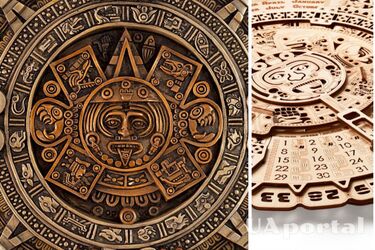Scientists make a breakthrough in understanding the Mayan calendar: how it works

Scientists from Tulane University in the United States have made a significant breakthrough in the study of the Mayan calendar. This complex system, consisting of several smaller calendars, was developed many centuries ago in pre-Columbian Mesoamerica.
It was previously believed that this calendar was tied to an 819-day cycle and consisted of four blocks of 819 days, each corresponding to one of four colors. Recent research has shown that this assumption was wrong and the Mayan calendar is linked to the synodic period of the visible planets, which lasts 45 years.
Read also: Archaeologists in Mexico found a Mayan toy: what Pok Ta Pok looks like
Scientists have made an important discovery that allowed us to better understand the complex system of the Mayan calendar. Researchers from Tulane University in the US found that the Mayan calendar is connected to the synodic period of the visible planets, not to the 819-day cycle as previously thought. Now white and yellow colors correspond to the zenith and nadir, respectively, which coincides with astronomical observations.
The Mayan calendar consists of four blocks of 819 days, each of which corresponds to one of the four colors. However, earlier researchers were mistaken in assuming that red corresponds to east, white to north, black to west, and yellow to south.
The scientists also found that the Maya were able to accurately calculate the synodic periods of the visible planets, which include Mercury, Venus, Mars, Jupiter, and Saturn. However, the uniform counting did not work with all the planets until scientists increased the length of the calendar to 20 periods of 819 days, or 45 years. This longer period made it possible to create a scheme in which the synodic periods of the visible planets were commensurate with the cycles of the 819-day calendar.
The scientists also found a convincing connection with another calendar of Maya Tsolkina, which consists of 260 days. The twenty-819-day periods total 16,380 days, which is the least common multiple of 260 and 819, suggesting a possible connection.
The world of astronomy has a new understanding of the Mayan calendar, which was created by astronomers of this ancient civilization and consisted of 819 days. Scientists have discovered that the calendar can be used to predict the synodic periods of all visible planets, as well as to compare dates and times with another sacred calendar, the Tzolkin calendar.
This new insight is a significant breakthrough and demonstrates that the Maya people were capable of highly accurate calculations using simple tools and observations of the night sky. This achievement is a testament to the ingenuity and intelligence of the Maya people and is an important contribution to our understanding of their culture and history.
Here's what the scientists found out when they uncovered the secret of the Mayan calendar. Earlier, archaeologists determined the true size of the largest Maya settlement.
If you want to get the latest news about the war and events in Ukraine, subscribe to our Telegram channel!
